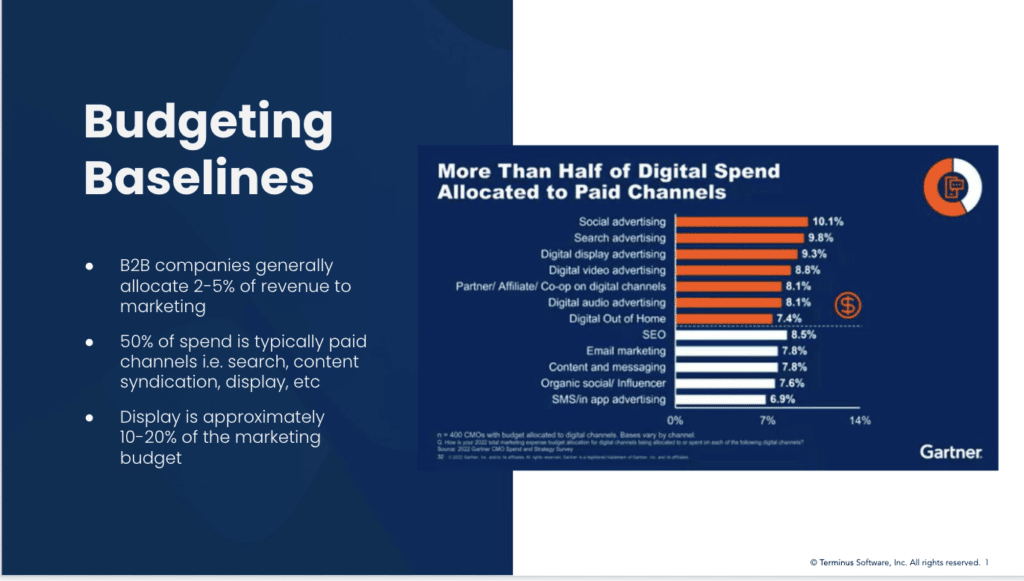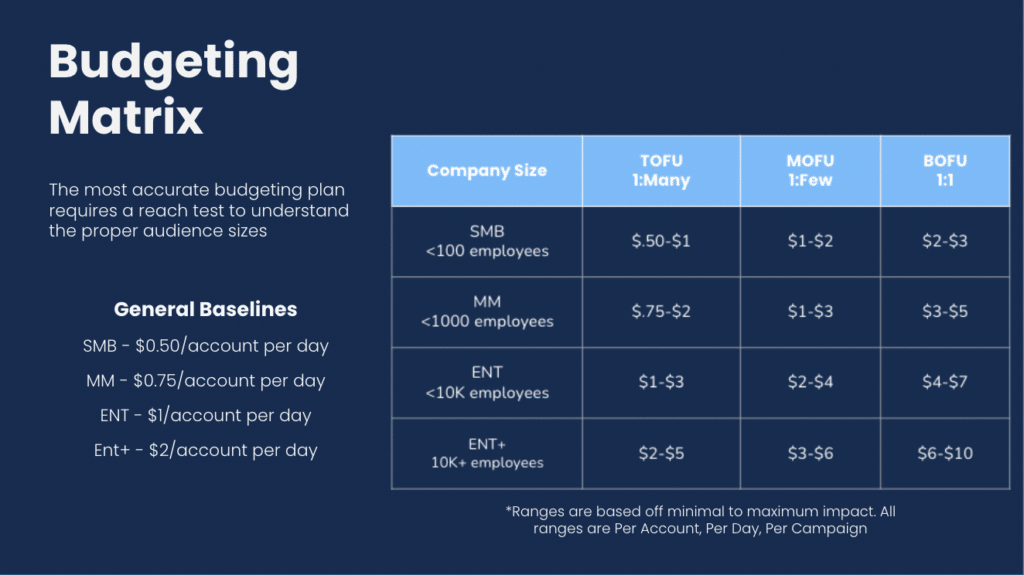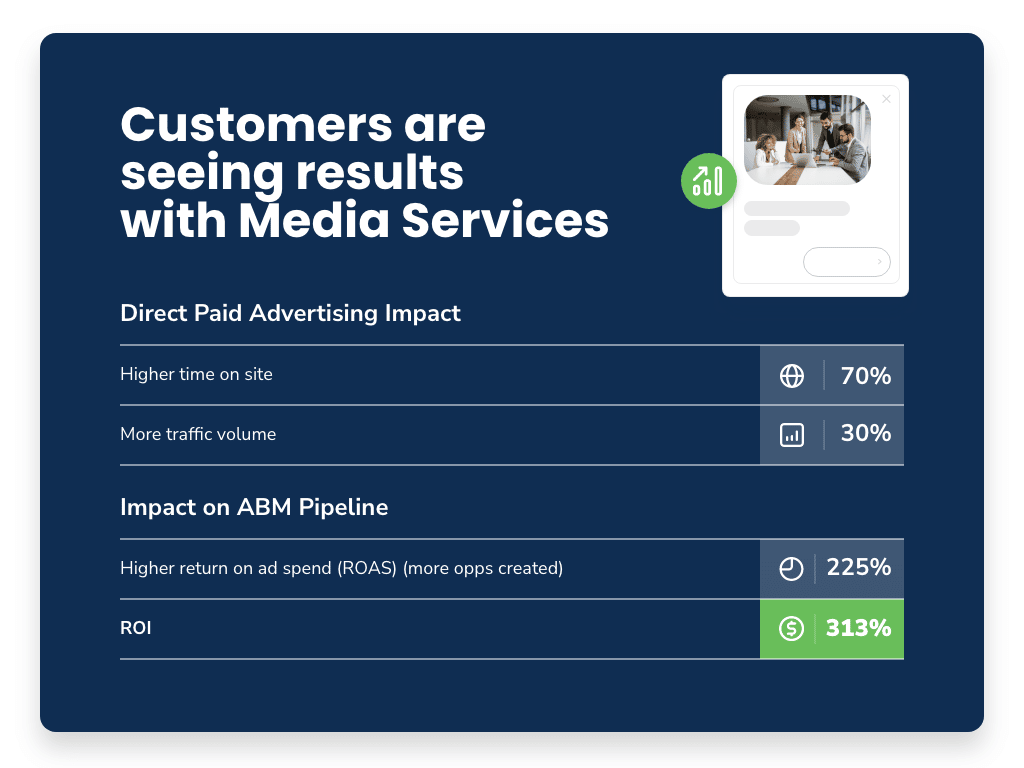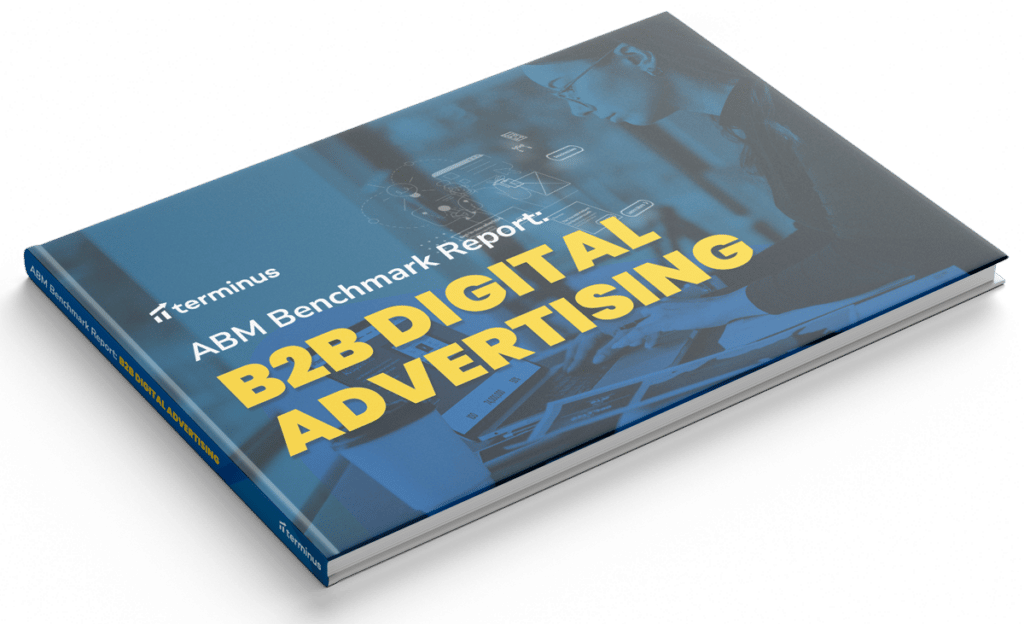If media budgeting was given a “senior superlative” in the yearbook, it would be “Task Most Likely to be Delegated.” So, if you’ve clicked on a headline about digital media budgeting, it’s probably a task that you’re in charge of. Terminus customers get the chance to access our team of B2B digital media managers. And while you can’t exactly delegate budgeting to them, they can help you maximize spend efficiency.
Media budgeting can be overwhelming and (transparently) frustrating. How do you know what to spend on brand awareness? What channels will speed up deals with prospects in my pipeline? What’s the best tactic to reach customers who may be ready to expand their services? It can be a lot—and you can’t afford to get it wrong.
“Ad spend is always one of the largest line items for CMOs. But because marketers are under intense budget scrutiny, missing the mark on ad performance isn’t an option,” says Natalie Cunningham, Chief Marketing Officer at Terminus.
We’ve built our team for your ROI.
With Terminus, you have the opportunity to work with a team of digital marketing managers that aren’t just experts on our platform, they’re experts in ABM. No matter what part of the customer lifecycle you’re targeting, serving the right messages to the right people—at the right time—is imperative.

Often times, companies are using massive audiences with a primary targeting criteria being firmographics. We get that. But massive audiences are not always better. It’s easy to misunderstand how to execute on achieving the right mix of audience coverage.
“ABM delivers a higher reach and ROI for marketers, maximizing spend and driving meaningful revenue outcomes,” says Cunningham. But because ABM is so precise (read: efficient) as a marketing strategy in the accounts that are being targeted, it is critical to ensure the budget is well-balanced to maximize coverage.
Understanding digital media budgets: the basics
It makes sense for marketers to be overwhelmed by what to spend where. “Unlike B2C where there’s a single person or small group making a buying decision, B2B buying committees can be made up of a lot of personas that need to be reached during the influencing process,” says Elizabeth Sener, Terminus Director of Media Strategy. “It’s important to target multiple personas as the account moves through the pipeline. That’s where our expertise and guidance comes in.”

As a baseline, B2B companies generally allocate 2-5% of revenue to marketing. The industry shows that somewhere around 50% of a company’s spend is typically used on paid channels (search, content syndication, display, etc), and 10-20% of the budget is dedicated to display ads.
Two things that could happen when your budget is out of wack
When you miss the mark on budgeting strategy, things can get away from you quickly and you’ll start to notice that something is off.
Your budget is too small. Undershooting your budget can lead to inefficiency. We find that advertisers end up spending more money over a great span of time, ultimately leading to a lower frequency of impression. When this happens, your target audience ultimately requires more impressions before engagement occurs which can affect prospects and customers at every stage of the flywheel.
Did you know? According to industry averages, the number of impressions that are served before a user engages (click, site arrival, search, etc) is 7-14. We’ve observed that the number needed for them to engage in a meaningful way (move to the next stage in the buying process) is 1,0000 impressions.
Your budget is too big. When you have too much allocated, ads end up getting over served trying to reach your daily budget. This will also result in frustrated and annoyed audiences who have been inundated with your messaging.
Heads up: when this happens, it’s common to see a decrease in CTR with challenges to increase it, even with creative refreshes. A/B testing can be a helpful tool here.

Expertise that leads to efficiency
Our team of programmatic ad specialists (digital media managers) are leading the charge in the industry and our most successful customers leverage our experts to knock their efforts out of the park, including understanding best practices around creating segment audiences, configuring the right targeting parameters, optimizing for performance, and reporting on value.
Customers who leverage our digital media managers generally see more than a 200% higher return on ad spend. Empowering YOUR team is priority number one for our team.

Fraud reduction matters—and we’re the best in the business.
Let’s be honest: fraud is a big deal. The total cost of ad fraud exceeded $81 billion in 2022, and is expected to increase to $100 billion by 2023, according to Statista research. With lower ad fraud and cost-per-mille (CPM) rates, we are proud of our industry-leading ad fraud rates of less than 3%, enabling marketers to achieve higher returns on one of their largest investments: ad spend.
It’s critical to ask questions about brand safety and fraud when you’re evaluating platforms to manage your advertising spend. What brand safety solutions does your platform offer? What is your brand safety rate? What is the rate of fraud on your platform? Don’t hesitate to ask to see reporting that validates those numbers. We think these questions are so important that we’ve put together a complete ABM Buyer’s Guide to serve as a resource to you when evaluating all facets of a platform.
The most important ebook of the year
To help marketers understand how to deliver more effective, targeted ads, we put together an entire guide that goes over the anatomy of high-performing ad campaigns. It uncovers trends in ad copy, creative, format and channel strategies that maximize revenue impact.
A few key insights from the new ABM Benchmark Report: B2B Digital Advertising include:
- Email and LinkedIn increase ROI for marketers. While ads in outgoing email signatures carry no cost for placement or clicks, they have the highest click-through rate at .50% to .80%. LinkedIn ads may carry a higher price tag of up to $30 per CPM, but these ads are highly targeted across demographics, industries, company sizes and more and carry click-through rates of up to .60%.
- Use messaging and CTAs to differentiate the brand. An ABM strategy gets ads in front of the right audience, but the content still matters. Marketers should create concise value propositions and CTAs, using fewer words while encouraging readers to learn more on a landing page or marketing resource. Marketers should also differentiate messages based on audience segmentation to increase engagement, use impactful callouts like customer quotes to demonstrate a solution’s effectiveness and align messaging with overall campaign goals
- Choose images and colors wisely. While graphics remain popular, marketers should consider using photos of people because of the ads’ higher click-through rates. Blue, black, and green background colors perform best.
What’s next?
You need a team that will help you strategize, target, execute, and win at the ABM game—which is why we’ve built a platform that will help you understand and reach your customers at every step in the customer lifecycle. If you’re ready to get started, visit our new Why Terminus? page and get your demo scheduled today!
